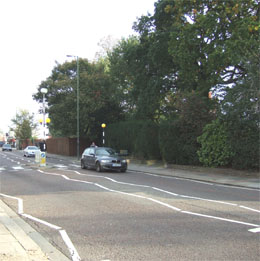Hampton Hill - Then and Now
Common land until the 19th century, some parts still remain unchanged.

Until the Enclosure Act of 1811 the whole of Hampton Hill was common land; it was a place of furze, briars and heather used by the people of Hampton to graze cattle and cut brushwood for fuel. After enclosure 'The Common' was parcelled out amongst the local property holders and the various allotments were then enclosed.
We know from a map of 1839 that by then there were a good number of buildings along the High Street (seen here during the Diamond Jubilee procession of 1897), with a few more in Windmill Road. A separate directory of the same year listed 26 businesses of which about 17 were probably shops. The Pantile Bridge, with an adjacent water splash for heavy traffic, at the southern end of High Street was built in 1832 and subsequently rebuilt in 1910.

The population grew in the 1850s and 1860s due to the arrival of labourers to build the Hampton waterworks and railways in those decades. It suited the people of Hampton to have these workers, at a distance, on The Common or New Hampton as it was then called. Similarly when St Mary's Church in Hampton became too small for the whole population a separate parish with its own church, St James's, was created in Hampton Hill. The energetic new vicar, the Rev F J Fitzwygram, used his own private means to develop the infrastructure and housing in the new parish.

Trams were introduced in 1903 and initially ran along the very narrow High Street on a single track with passing loops. Between 1904 and 1910 double tram tracks were installed and large numbers of properties were demolished and rebuilt further back on their sites.

Since that time many of the larger houses and rows of cottages have been replaced by blocks of flats and there has been much infill. The overall appearance of the southern end of High Street is relatively unchanged from its rebuilding a century ago but the northern end has been significantly rebuilt in recent years.



